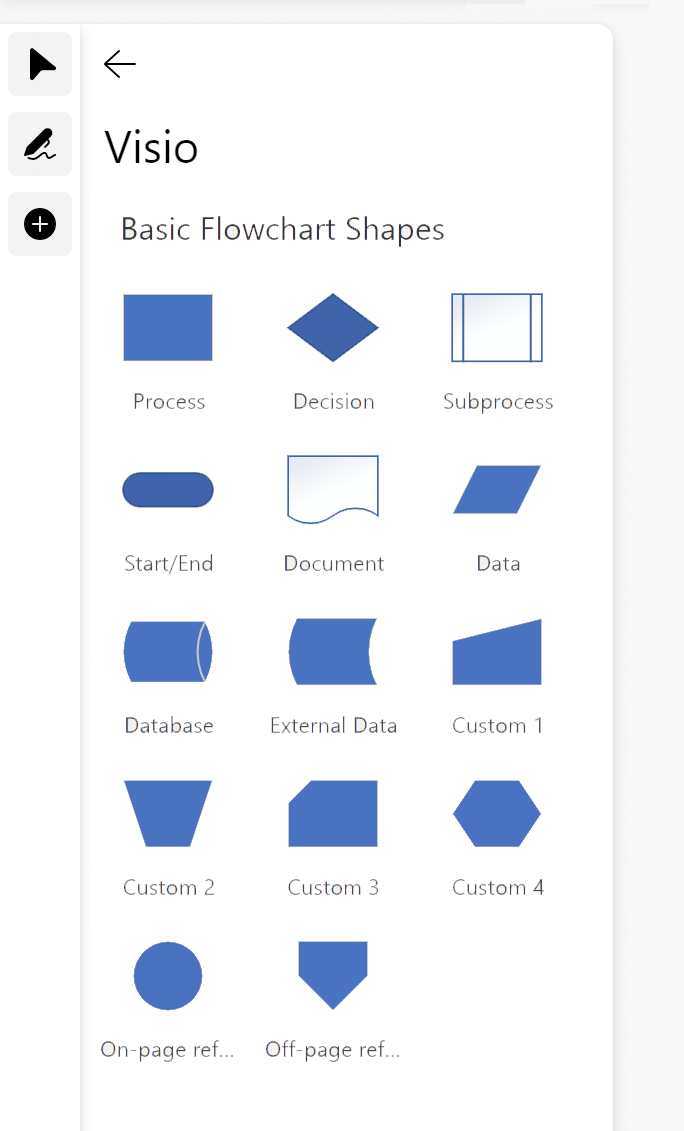Visio + Whiteboard: An Opportunity to Reshape Visual Collaboration



I was doing some research in advance of a presentation last month when I stumbled upon a Gartner article that – in the context of online collaboration tools – classified digital whiteboards as “visual collaboration” services.
At first, I was a bit confused as to why Gartner would use an ambiguous term or phrase for services like Microsoft Whiteboard, Mural and Miro, but then the more I thought about these services and their unique capabilities, the more it made sense to me.
In the hunt to bridge the great divide between physical and virtual collaboration in this new era of hybrid work, the company I work for (like many others) began searching for a digital whiteboard solution soon after the pandemic hit. While MITRE uses Microsoft 365 services extensively, the Whiteboard service wasn’t available to us until recently, so we were attempting to fill the void with services like Mural, Visio, draw.io and (gulp) even PowerPoint at times.
None of these served as a great whiteboard replacement, but they each offered unique capabilities that facilitated different forms of collaboration; including meeting or session facilitation, mind-mapping, process diagraming and more. And now seeing the breadth of collaborative capabilities these services enable, it makes me appreciate the catch-all term that Gartner coined (I’m assuming they were the ones that coined it) with “visual collaboration services”.
Ideate and Collaborate on a Blank Canvas
The more I thought about this term though - coupled with some great ideas I saw in the comments section of Microsoft’s “refreshed” Whiteboard announcement - the more I thought about the potential that Microsoft has in blending Whiteboard, Visio, Teams, Flow and Loop components all together to create a super-charged “visual collaboration service”.
In all fairness, Microsoft has made many references to the inclusion of Loop components into the Whiteboard service, but until we get more details, we are left speculating on how this capability will function within the Whiteboard service.
What we do know is that many organizations lost the ability to brainstorm and ideate when the pandemic hit. One of the most killer capabilities that organizations had pre-pandemic was the [physical] whiteboard. It is a capability that is often underrated; low cognitive load to use, but incredible impact. Process and workflow diagrams, notional architectures, mind-mapping; the analog whiteboard was able to provide a canvas where anyone could communicate complex thoughts and ideas in more visual, succinct ways.
But how do you improve that? In this new era of hybrid work, how do you enable that type of seamless collaboration? The whiteboard service paired with devices like a Surface Hub 2 do an incredible job at enabling effective, hybrid whiteboarding… but what could elevate the usability of this visual collaboration service and enable even more effective collaboration?
Super-charged Collaboration
Now I’m wondering how epic a “visual collaboration service” that combines the best of Microsoft Whiteboard, Visio, Teams and Loop components could really be. I have long argued that Visio’s basic diagramming capabilities are what most users need to communicate concepts and ideas to others. Now that these basic capabilities are being made available for free to enterprise users, I think Microsoft will see significant usage of this service.
But what would make Visio even better? What if this tool was infused into the Whiteboarding service? Most whiteboard sessions I’m in include some form of process or relationship mapping. What if the Whiteboard service could be infused with intelligence to recognize or covert process-based shapes into Visio objects, or even better; a Flow? Note the simple mockup I provided in the hero image above.
We know that Microsoft is enabling users with advanced Vision licenses to convert their diagrams into Flows, but bringing this capability to Visio on the web could be slick.
Once the Visual Collaboration service converts a diagram into a Visio Loop component, the idea is that Visio power users could continue to work on the component within Visio (with updates displaying in real-time via the promise of Loop components). Or perhaps the Visual Collaboration service (or Whiteboard service) augments its “create” pane to include additional, Visio-specific controls.

There would obviously be a delicate balancing act of what components to enable via this unified, web-based canvas vs. preserving within the dedicated client app (not to mention the license differences), but enabling users to extend these basic process or data flow diagrams could be incredibly powerful.
And Teams Integration, of Course
Similar to how the Whiteboard service is integrated into Teams online meetings, it would make tremendous sense to not only infuse this new collaboration experience into online meetings, but enable commenting for any / all Loop components.

Potentially associating a “Meet Now” button into this contextual menu could automatically share the initiator’s screen and place a link to the Loop component within the meetings chat.
It’s going to be interesting to see how these services grow within Microsoft 365. There sure are a number of ways to continue to integrate and super charge the collaborative experience. :)
